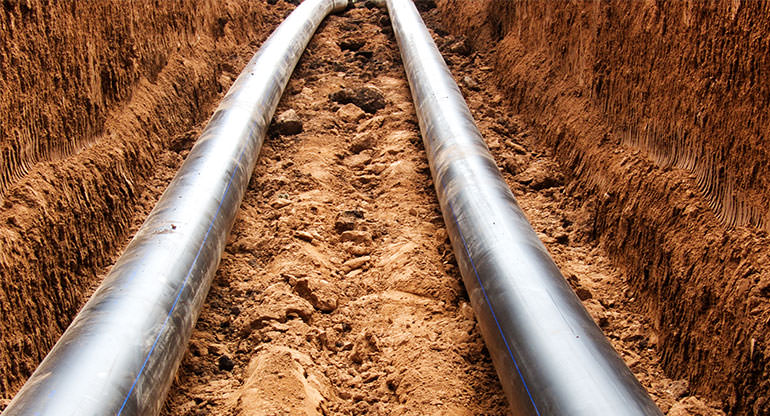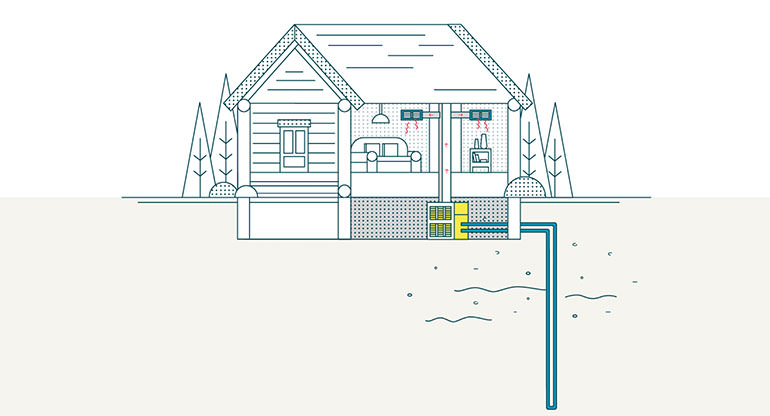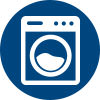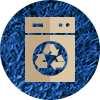We’ve always needed energy to heat our homes. For the vast majority of human existence, we’ve gotten that energy from natural materials—first firewood, then slower-burning natural oil, then fossil fuels. But while we were gathering materials to consume, we were also busy discovering perhaps the most obvious source of heat apart from the sun—the earth itself.
According to Energy.gov, humans first discovered geothermal energy some 10,000 years ago when Native Americans heated themselves in naturally-occurring hot springs. Ever since, we’ve been trying to figure out how best to utilize the earth’s warmth. We’ve built towns on hot springs, heated homes with piped-in hot water, and even built power plants that run on steam. But even with all that progress, we as Americans have struggled to implement an energy-efficient geothermal system in a cost-effective way on a large scale.
Until now.
Enter Ball State
It gets cold in Indiana. Heating an entire college campus is expensive, and burning fossil fuels to do so is hardly energy efficient. Luckily, Ball State University, located in Muncie, Indiana, has launched an ambitious project that, if all goes right, will reduce campus carbon footprint by nearly one half. Engineers at Ball State have bored hundreds of holes into the ground around campus to access the heat of the earth. They can now turn that heat into a sustainable source of energy.

It’s an amazing process, and it’s called a geothermal energy system. The earth’s energy warms water, which travels through pipes that snake throughout the campus, alternatively warming or cooling—whichever is necessary—any given indoor area. The investment, like most energy-saving ventures, is a true win-win-win. The campus will save money, create a culture of environmental sustainability, and create thousands of contracting jobs while they’re at it. How cool is that?
Energy-Efficient Retail Options
So good for Ball State. A college campus has the resources to implement a dynamic change like redoing its entire heating system. But how does that affect you?
We’re glad you asked! Thanks to a new startup called Dandelion Energy, Inc.—and its new partner, Aztech Geothermal—you can build your own geothermal heating system for your very own home.

“Dandelion is making geothermal heating and cooling affordable by introducing a number of process and technology innovations, including analytics-based marketing, fixed system pricing, a low monthly payment option, and an innovative drilling method,” Green Builder Media writes.
So what are you waiting for? Geothermal energy is the wave of the . . . present. Harness it, and invest in your future!
Photo Credits: Ball State University Campus, Dandelion Energy, Inc.


 We’ll do these in reverse order. This story should sound familiar to renters everywhere. You’re out of the house and you suddenly feel a sense of dread. You’ve left the hot plate on. Or, so you think. But there’s nothing you can do about it except leave wherever you are, go home, and check.
We’ll do these in reverse order. This story should sound familiar to renters everywhere. You’re out of the house and you suddenly feel a sense of dread. You’ve left the hot plate on. Or, so you think. But there’s nothing you can do about it except leave wherever you are, go home, and check. Ever get in the shower determined to duck in and out, using as little water as possible—only to hang around for minutes longer than necessary just because the gentle caress of the water is so lovely? I think all of us have probably had this experience.
Ever get in the shower determined to duck in and out, using as little water as possible—only to hang around for minutes longer than necessary just because the gentle caress of the water is so lovely? I think all of us have probably had this experience. This is another great idea for renters especially. You don’t want to invest in a full-out home security service, but you still want peace of mind.
This is another great idea for renters especially. You don’t want to invest in a full-out home security service, but you still want peace of mind.  This one is for the makeup lovers. You don’t need a makeup mirror that uses tons of incandescent light. The simplehuman
This one is for the makeup lovers. You don’t need a makeup mirror that uses tons of incandescent light. The simplehuman  This one happens to be our favorite because it even entertains us while saving us energy.
This one happens to be our favorite because it even entertains us while saving us energy.  Everyone needs two things when they go to the bathroom: ventilation and ambient noise.
Everyone needs two things when they go to the bathroom: ventilation and ambient noise.  Home washer-dryer setups have saved millions of Americans countless hours at soulless laundromats. But they can also be a little inefficient when it comes to space—particularly if you are of the urban persuasion. Do you put your laundry appliances in the kitchen? In the garage (if you have one?) It’s not an easily answered question. The Whirlpool® compact washer and dryer combo answers it. And it does so with a couple of appliances that are among the
Home washer-dryer setups have saved millions of Americans countless hours at soulless laundromats. But they can also be a little inefficient when it comes to space—particularly if you are of the urban persuasion. Do you put your laundry appliances in the kitchen? In the garage (if you have one?) It’s not an easily answered question. The Whirlpool® compact washer and dryer combo answers it. And it does so with a couple of appliances that are among the  This one isn’t particularly energy efficient—locks aren’t known for running up the ol’ energy bill. But even a small change like upgrading to an
This one isn’t particularly energy efficient—locks aren’t known for running up the ol’ energy bill. But even a small change like upgrading to an  In 2010, developer
In 2010, developer  Speaking of going a long way, the list of energy-efficient amenities in Seabourn Cove is truly something. According to Green Builder:
Speaking of going a long way, the list of energy-efficient amenities in Seabourn Cove is truly something. According to Green Builder: When we say breathe easier, we mean literally. The Code Watcher story writes that “40 percent of diagnosed asthma is associated with home exposures (e.g., moisture, temperature variations, pests), some of which can be improved through energy-efficiency activities.”
When we say breathe easier, we mean literally. The Code Watcher story writes that “40 percent of diagnosed asthma is associated with home exposures (e.g., moisture, temperature variations, pests), some of which can be improved through energy-efficiency activities.” Who would have thought that creating a more energy-efficient home could curb your risk of serious health consequences like heart disease and cancer? Well, according to a 2016
Who would have thought that creating a more energy-efficient home could curb your risk of serious health consequences like heart disease and cancer? Well, according to a 2016  The boundaries set by the Living Building Challenge meant a complete re-design of the project by Tozer. While a LEED certification is extreme, the Living Building Challenge takes green design to another level.
The boundaries set by the Living Building Challenge meant a complete re-design of the project by Tozer. While a LEED certification is extreme, the Living Building Challenge takes green design to another level. Creating this remarkable home also wasn’t easy, or cheap. Because of the complex nature of the experiment, Tozer had to assemble a network of sustainability experts, contractors, specialists, and landscape architects, not to mention sourcing the home’s unique materials. The eventual final price tag of Desert Rain is $3.48 million, roughly three times the cost of a new, high-end modern home in nearby Bend.
Creating this remarkable home also wasn’t easy, or cheap. Because of the complex nature of the experiment, Tozer had to assemble a network of sustainability experts, contractors, specialists, and landscape architects, not to mention sourcing the home’s unique materials. The eventual final price tag of Desert Rain is $3.48 million, roughly three times the cost of a new, high-end modern home in nearby Bend. For its owners, Desert Rain is meant to be an inspiration; demonstrating to homeowners, designers, and builders that it really is possible to build a better, healthier, more sustainable home, as reflected by Barbara Scott’s
For its owners, Desert Rain is meant to be an inspiration; demonstrating to homeowners, designers, and builders that it really is possible to build a better, healthier, more sustainable home, as reflected by Barbara Scott’s  When your refrigerator hits the just-right proportion of 75 percent full, your stored foods team up with your refrigerator in a really cool way. The foodstuff, cooled to a low temperature, actually helps maintain the chilly ecosystem of the fridge when the door is opened and warm air rushes in. But be careful! Overstuffing limits air circulation, causing the unit to work with less efficiency.
When your refrigerator hits the just-right proportion of 75 percent full, your stored foods team up with your refrigerator in a really cool way. The foodstuff, cooled to a low temperature, actually helps maintain the chilly ecosystem of the fridge when the door is opened and warm air rushes in. But be careful! Overstuffing limits air circulation, causing the unit to work with less efficiency. Most refrigerators should be set between 37 and 40 degrees in the main section, and 0 to 5 degrees in the freezer. If you keep your food too warm, you can lose the cooling effect described in tip #1. If you cool your food too much, you are losing out on energy efficiency. In order to increase your refrigerator’s efficiency, check your owner’s manual to be sure these settings are appropriate for your unit.
Most refrigerators should be set between 37 and 40 degrees in the main section, and 0 to 5 degrees in the freezer. If you keep your food too warm, you can lose the cooling effect described in tip #1. If you cool your food too much, you are losing out on energy efficiency. In order to increase your refrigerator’s efficiency, check your owner’s manual to be sure these settings are appropriate for your unit. Experts say that at least twice a year you should unplug your unit briefly to rid the condenser coils of dust. Once the unit is unplugged, use a long brush or the crevice attachment on your vacuum cleaner. If the condenser coils aren’t cleaned, the buildup of dust can keep heat from being dispelled and cause your unit to overheat.
Experts say that at least twice a year you should unplug your unit briefly to rid the condenser coils of dust. Once the unit is unplugged, use a long brush or the crevice attachment on your vacuum cleaner. If the condenser coils aren’t cleaned, the buildup of dust can keep heat from being dispelled and cause your unit to overheat. The UK government
The UK government  Energy and Climate Secretary,
Energy and Climate Secretary,  The United Kingdom fell behind countries like Germany, Italy, Japan, and France because the government cut off certain funds. According to this
The United Kingdom fell behind countries like Germany, Italy, Japan, and France because the government cut off certain funds. According to this